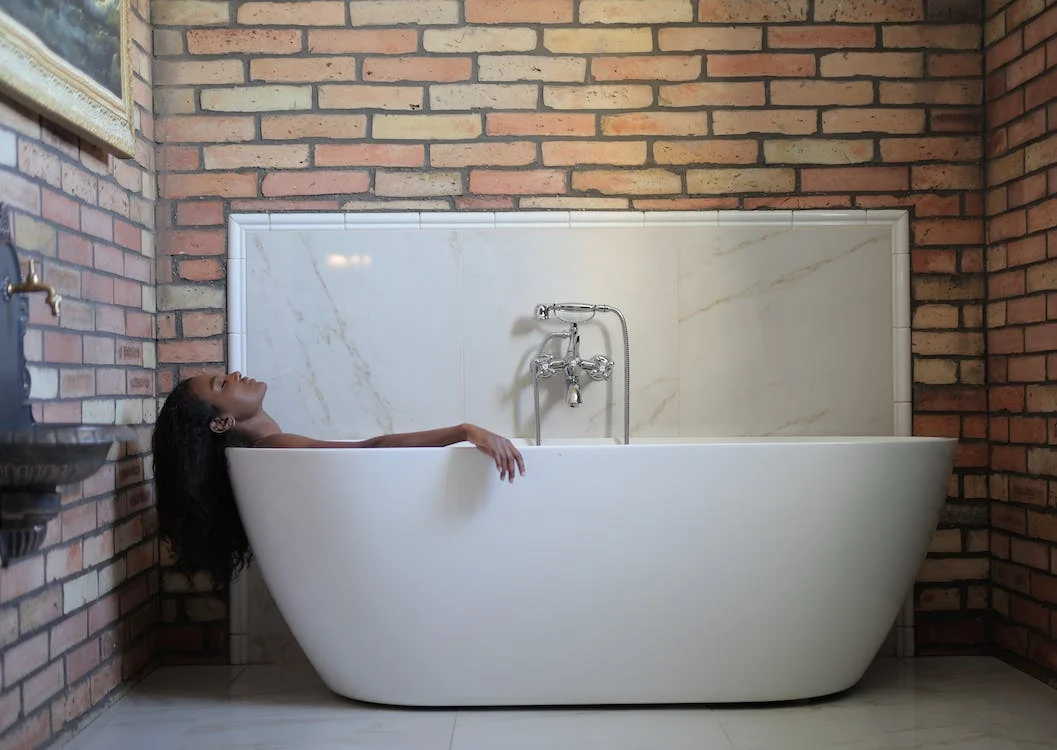How to Choose Your Bathtub
If the bathtub is appreciated in the bathroom, the space it occupies makes it essential to choose the right dimensions, shape, and material, as well as the way it will be installed in the room.
The shapes of the bathtub
A bathtub can take many shapes: classically rectangular or oval, but also square, round, octagonal, hexagonal, quarter-circle, etc. Some shapes, like the quarter-circle, are more comfortable than others.
Some shapes, such as the quarter circle or square, are particularly well suited to corner installation, while a round bathtub, for example, will work wonders in an open space.
Possible sizes for a bathtub
The size of the bathtub must, of course, be adapted to the size of the room but also to the size of its user(s).
The smallest is the clawfoot bathtub, with dimensions starting at around 105 cm long and 70 cm wide (for 40 l of water). The next largest is the corner bathtub, which is usually between 120 and 180 cm long and 70 cm wide.
The dimensions of classic bathtubs start at around 160 cm to more than 190 cm, while the width is from 70 to more than 150 cm.
Types of bathtubs

The corner bathtub fits in a corner to save square meters.
The clawfoot bathtub is shorter but also higher than a traditional bathtub. The bath is therefore taken in a sitting position and not lying down. It is also available in a corner version.
The vertical bathtub takes up little floor space, and the bath is taken in a sitting position, immersed in water up to the neck.
The double bathtub (or duo bathtub) is one of the largest. Designed to accommodate two people, it is the same length as a conventional bathtub, with a minimum width of 150 cm (face-to-face installation) to over 240 cm (side-by-side installation). If you want to be able to lie down completely, plan the length of the bathtub according to the taller of the users.
Note: The clever bathtub-shower combo has the same footprint as a conventional bathtub but, as a true two-in-one, offers a larger space at one end for easy showering.
Possible materials for a bathtub
There are many:
Cast iron is the traditional material for the bathtub. It is particularly insulating and resistant to shocks and scratches but remains heavy.
Enameled steel is shock and scratch-resistant, light (unlike cast iron), and 100% recyclable. But it has a cold touch and, above all, does not retain the heat of the bath well.
Acrylic is the most commonly used material today. Lightweight, it retains water temperature well but does not tolerate harsh detergents.
Reinforced acrylics with increased durability: such as Toplax®, which is very light, non-slip, and recyclable; Biocryl®, which limits the formation of limescale and the proliferation of bacteria; Acryl®, which is easy to drill; or Quaryl®, a mixture of quartz and Acryl®, which is non-slip, non-porous, and resistant to shocks and scratches, but also more expensive.
Solid surfaces are synthetic materials composed of natural materials, such as stone, bonded with a resin. Corian® is one of the best-known. All of them offer great resistance to shocks and scratches, but also to stains and bacteria, as well as good insulation and ease of maintenance. But their cost is particularly high.
Wood, natural and warm, should always be chosen in rot-proof species.
In natural stone, the bathtub is sculptural but is particularly heavy (up to 500 kg) and, therefore, not recommended for upper floors.
Glass offers a very design rendering but remains slippery and fragile.
Concrete can be used to make custom-made models.
The installation of the bathtub
The bathtub can usually be installed against a wall or in a corner.
But to be highlighted, it can also be installed as an open space in the center of the room. If it is placed directly on the floor, its installation is more restrictive, as its drainage requires a slope of at least 2 cm per meter.
The bathtub can also be embedded in the floor or in a podium. Its contours must be level, both lengthwise and widthwise. It must rest on the floor, as the edges of the podium cannot support its weight alone.
Attention: a minimum clearance of 60 cm is required in front of and around the bathtub.
Bathtubs: points of sale
You will find bathtubs at A to Z KITCHEN & BATH GALLERY. Backed by 17 years of experience in providing custom designs for bathroom remodeling solutions, they only provide materials from trusted and renowned brands and offer free design consultations for your bathroom as well as free quotes.


